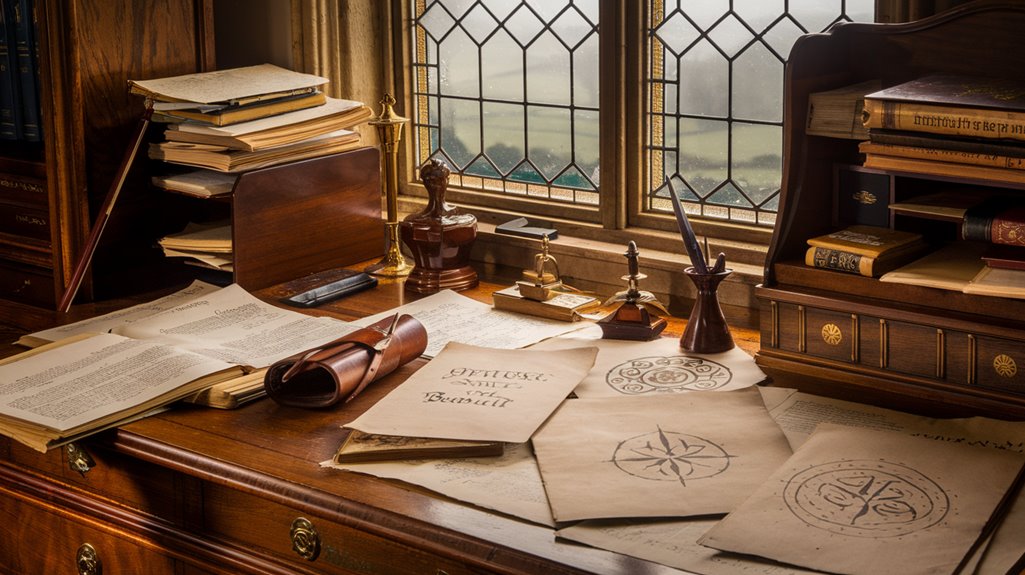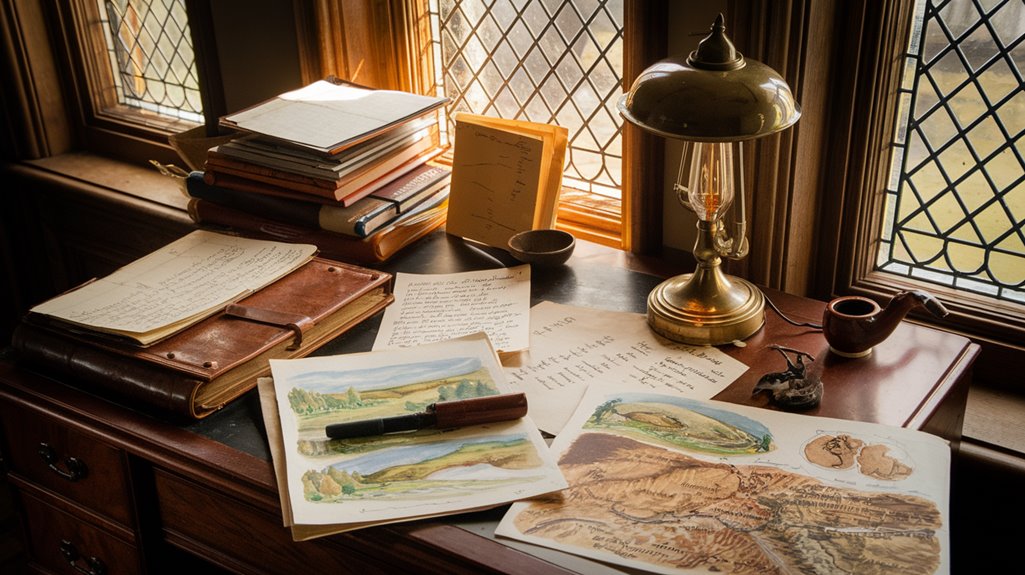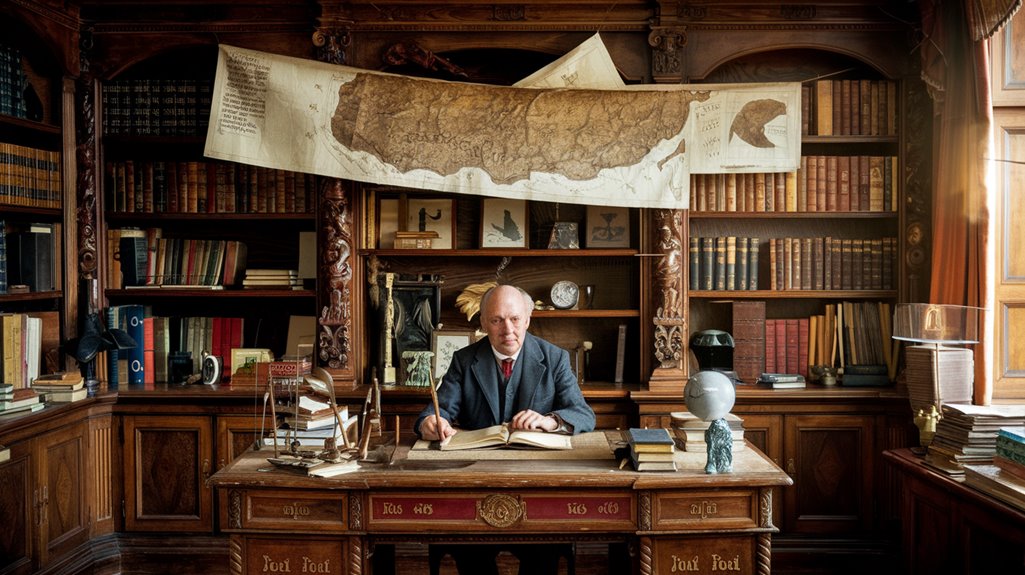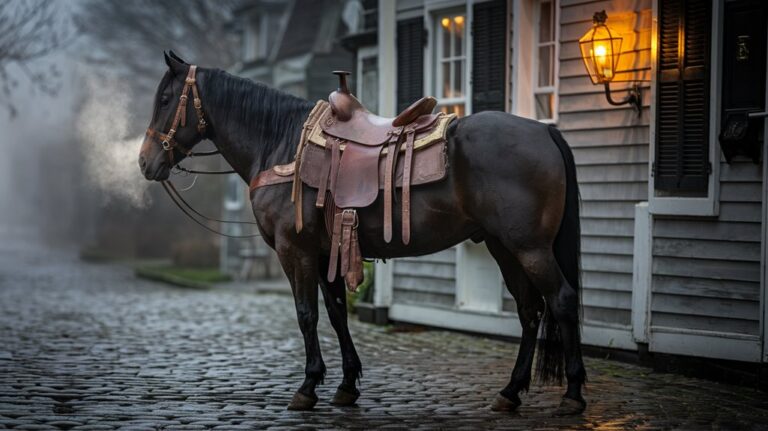How Tolkien Accidentally Built a Mythology for England
When you compare the rich mythological traditions of Ireland's Cú Chulainn or Norway's Thor to England's fragmentary folklore, you'll notice a striking gap. That's where J.R.R. Tolkien enters the picture. You might think he set out to create Middle-earth as England's answer to these grand mythologies, but you'd be wrong. Instead, his passion for languages and ancient stories led him to build something he never intended: a mythological framework that would become England's unofficial origin story.
The Gap in England's Mythological Heritage

While many European nations boast rich collections of literary myths and folklore, England faces a unique gap in its mythological heritage.
You'll find this mythological fragmentation stems from waves of invasions by Romans, Saxons, Danes, and Normans, each leaving their mark on England's storytelling traditions. The long-held oral traditions of England's common people have gradually faded over time.
Unlike countries that had dedicated folklorists like the Brothers Grimm or Hans Christian Andersen, England never developed an extensive collection of its native myths.
Instead, cultural influences from translated European folklore in the 19th century overshadowed England's own stories.
The rapid urbanization of the country further weakened traditional storytelling practices, as communities that once passed down these tales became increasingly disconnected.
This combination of factors created a void in England's mythological landscape that would later inspire Tolkien's creative endeavors, though his work ultimately evolved beyond a simple mythology for England into something far more complex.
Seeds of Inspiration: From Finnish to Anglo-Saxon
Though Tolkien aimed to create a distinctly English mythology, his creative wellspring drew deeply from Finnish and Anglo-Saxon sources.
You'll find Finnish influence throughout his work, from the melodic sounds of Quenya to the epic tales inspired by the Kalevala. The magical Sampo's echo resonates in both the Silmarils and the One Ring, while the wise Väinämöinen lives on through characters like Gandalf and Tom Bombadil. Scholars have noted that his enthusiasm for Finnish language was so profound that discovering it felt deeply intoxicating to him.
The Anglo-Saxon integration proves equally fascinating, as Tolkien wrestled with England's complex cultural heritage. His deep appreciation for Beowulf shaped his perspective on how ancient myths endure through time.
Through his Red Book of Westmarch framing device, he bridged historical authenticity with mythological creation. By weaving together Finnish mysticism, Anglo-Saxon heroic traditions, and Christian elements, Tolkien crafted something entirely new – a mythology that transcended its diverse origins.
Building Blocks: Languages, Legends, and Lore
Languages served as the cornerstone of Tolkien's mythological architecture, with his stories emerging from his passion for linguistic invention. You'll find this evident in his creation of Elvish languages like Quenya and Sindarin, which showcase intricate language evolution through Middle-earth's ages.
His approach to cultural storytelling went beyond mere vocabulary creation. When crafting his mythology, he mapped fictional languages to real-world counterparts, using Old English for Rohirric and Old Norse for the language of Dale. As a devout Catholic scholar, his worldview deeply influenced how he approached myth-making differently from his contemporary C.S. Lewis. His deep admiration for the Finnish epic Kalevala and its folklore significantly shaped his approach to constructing mythological narratives.
This linguistic foundation helped him weave a rich tapestry of interconnected myths and legends that specifically aimed to fill gaps in England's historical record. By combining glossopoeia (language creation) with mythopoeia (myth-making), he developed a thorough world where languages and stories naturally grew together, reflecting his vision of an authentically English mythology.
The Unexpected Journey From Academic to Mythmaker
Before becoming a renowned fantasy author, J.R.R. Tolkien established himself as a distinguished academic. You'll find his early career deeply rooted in classical education, beginning at Exeter College, Oxford, where he studied an impressive array of languages including Finnish and Welsh.
These literary influences would later shape his creative work in unexpected ways.
During his academic journey, he became a known contributor to the King Edward's School Chronicle with his earliest published works. His academic contributions were significant. He worked on the Oxford English Dictionary, taught at Leeds, and held prestigious positions at Oxford, including the Rawlinson and Bosworth Professor of Anglo-Saxon. His highly influential lecture "Beowulf: The Monsters and the Critics" transformed how scholars approached the ancient epic.
While he didn't explicitly set out to create a "mythology for England," his expertise in philology and ancient texts naturally influenced his storytelling.
His progression from academic to mythmaker wasn't planned – it evolved organically from his love of languages and his deep understanding of historical narratives.
Weaving History With Fantasy: Tolkien's Creative Process

While creating his vast mythological world, Tolkien masterfully wove together historical elements, linguistic foundations, and diverse mythological traditions. His approach to mythical storytelling wasn't simply about inventing new tales but discovering them through a process that felt more like uncovering ancient historical narratives. His tendency toward numerous unfinished works actually strengthened the authenticity of his mythology. Tolkien's belief that sub-creation reveals truth shaped how he approached building his fictional universe.
- He'd draw from multiple traditions, similar to how ancient myths often have varying versions of the same story.
- His creation of languages served as the bedrock for his world-building process.
- He viewed his work through an Elvish lens, focusing on art rather than power.
- His artistic abilities enhanced his visual storytelling and world-building.
You'll find that Tolkien's creative process wasn't just about writing stories; it was about layering meanings and treating his fictional world with the same depth and complexity you'd expect from real historical accounts.
A Living Legacy: England's Accidental Mythology
Through his meticulous world-building, Tolkien inadvertently created what many consider England's missing mythology.
You'll find his influence everywhere, from Amazon's "The Rings of Power" to countless fantasy works that draw upon his mythological themes. While he never claimed to create a national mythology, his work has become deeply woven into England's cultural identity.
You can see how The Shire mirrors England's pastoral landscapes, while Mordor reflects the dark side of industrialization. The Prancing Pony inn stands as a testament to the traditional English public house culture that Tolkien cherished.
The hobbits embody quintessential English characteristics, and Rohan captures the spirit of Anglo-Saxon England.
What's remarkable is how Tolkien's creation has transcended national boundaries while remaining distinctly English. His blend of Norse, Finnish, and Anglo-Saxon elements has given England the mythological foundation it previously lacked.










